Raising Water Consciousness through
World’s Biggest Photo Exhibition and
Largest collection of Photo Stories on Water
Photo Stories | Water and Livelihood
Water for Profit
Nandita Singh and Om Prakash Singh
3 May, 2016
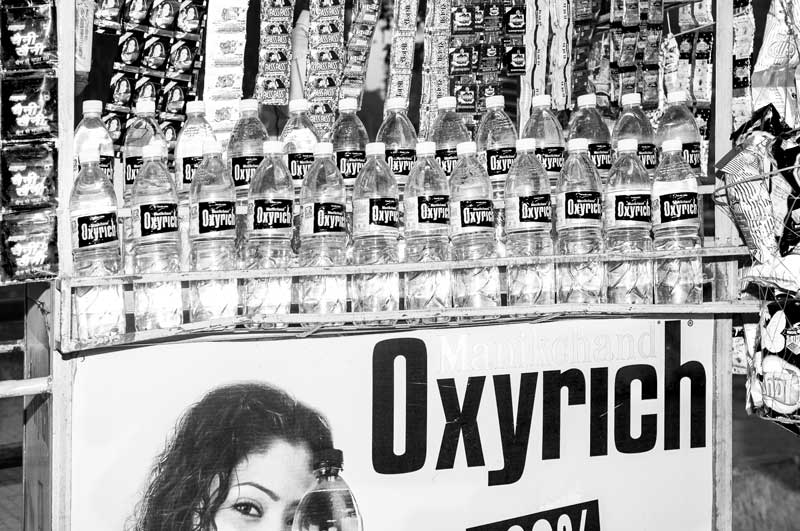
Water is a resource of great economic value. Apart from enabling diverse livelihood and economic practices like crop production, animal husbandry, fisheries and industries, water itself has come to be sold and traded as a commodity for profit including services related to its provision and delivery. Packaged drinking water – in sachets and bottles – is sold widely in urban areas and sometimes in rural areas as well. It may be sold by vendors on the roadside for earning a meagre commission or in drinking water stalls and shops in the market, where the profit margin may be little bigger. The biggest profit in the packaged drinking water chain goes to the owners of the brands that produce these packages under different names, bearing different price tags. In some urban areas, drinking water is also sold on refrigerated carts by vendors in the street on a per glass basis where they generally earn small commission. Packaged or refrigerated drinking water can be a boon for consumers who are travelling especially in the hot season, or for households where drinking water quality is known to be degraded. Drinking water supply through private tankers and trucks is another form of gainful income from drinking water directly. Water tankers and trucks are common in urban colonies where water supply is irregular or becomes a seasonal problem. Also residents in the slums and unsettled colonies who lack access to municipal supplies may be compelled to depend on these services which may actually prove quite expensive. At a smaller scale, water filled in drums and large cans may be supplied through cycle-rickshaws or hand-driven carts against lower service charges. In the rural areas, water supply services may be similarly provided through animal-drawn carts or small tankers against service charges that may even vary across seasons. While it is true that drinking water is directly a source of profit for many in different ways, the customers may remain at the receiving end because they have to either ‘buy’ or ‘pay’ for delivery of a resource which has minimal or no cost, and even after paying the price, the quality may not be assured. These effects can in turn hinder enjoyment of their human rights in various ways. This photo story presents a selection of the varied ways in which water serves as a source of profit in urban and rural settings in different states of India. The title photograph depicts a roadside stall selling bottled water in Central district, National Capital Territory of Delhi. One liter bottles generally cost between Rs. 12 and Rs. 22, depending upon the brand, local brands being cheaper.
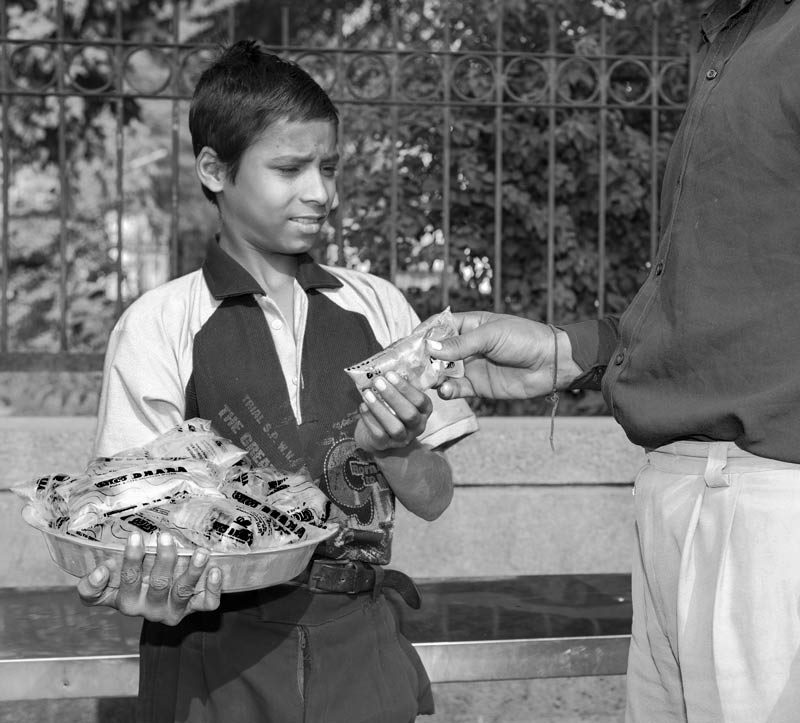
South-East district, National Capital Territory of Delhi
Sellers of water sachets make brisk business especially in the scorching heat of summers when the public on the roads desperately seek to quench their thirst. Water sachets are generally locally packed and cheap in price but one cannot be really sure of the quality of the water contained.

North district, National Capital Territory of Delhi
Sellers of bottled water similarly make brisk business at traffic lights when the motor vehicles stop. The brands sold at these points are generally local and comparatively cheap in price.
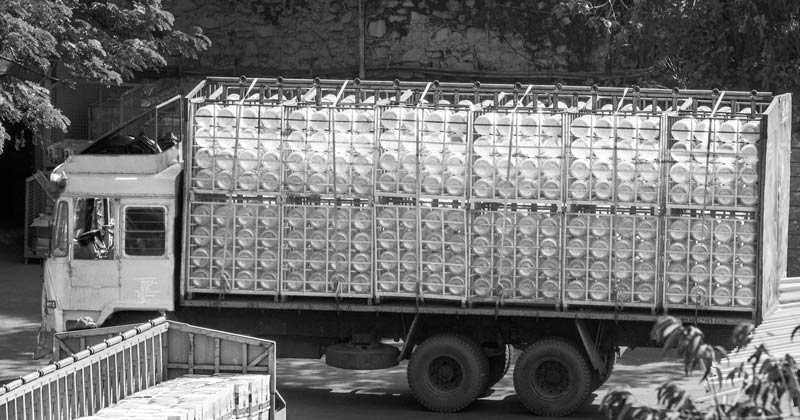
Mumbai, Maharashtra
Many well-known bottled water brands claim that they sell 'mountain water' or 'spring water' with high mineral content. However, in many cases, these bottles may be actually packed with local water in the city derived from either the groundwater or the tap water supply.
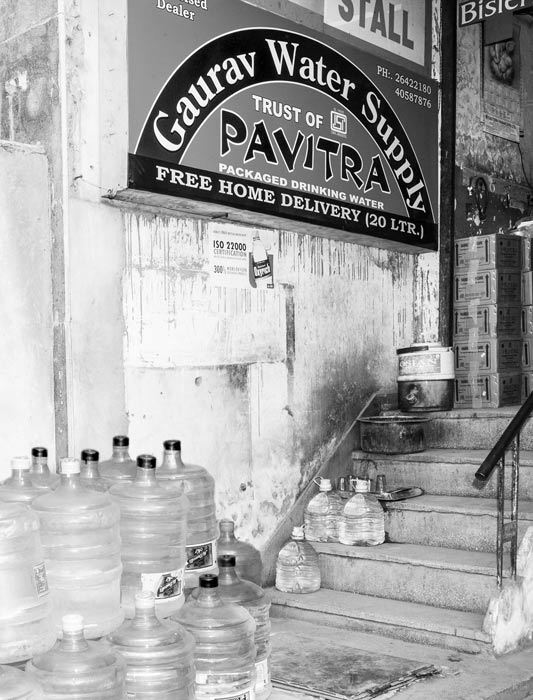
South-East district, National Capital Territory of Delhi
In many cities – big or small – selling of packaged drinking water is becoming a booming business and different packaged drinking water brands are often kept by water traders and suppliers in their shops. While half to two liters bottles tend to be directly purchased by customers from the shops, the bigger twenty liters containers are often transported by the traders and suppliers to offices and homes nearby on demand as well as on a regular basis round the year. In the National Capital Territory of Delhi, the traders and suppliers get to earn Rs. 5-10 per twenty liters container depending upon the brand. What is further noteworthy is that the margin of profit is often greater in case of the local brands.
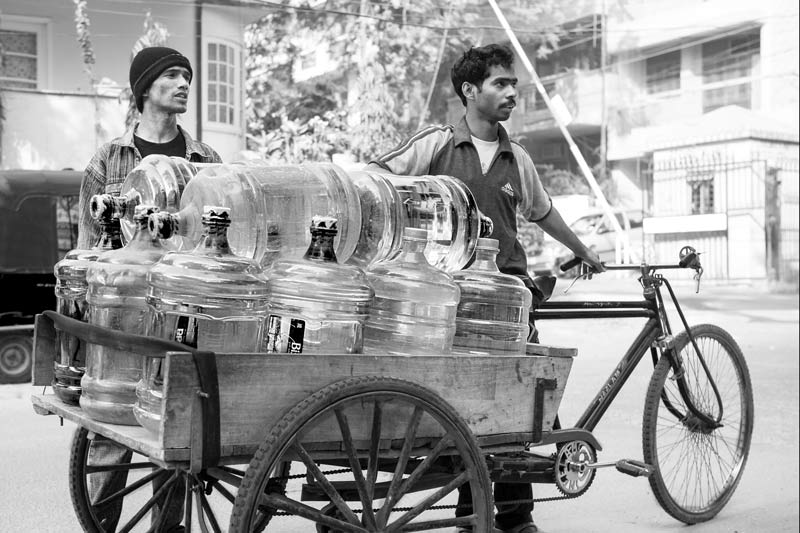
South-East district, National Capital Territory of Delhi
The free delivery option provides an employment opportunity to service delivery boys who often transport the twenty liters water containers on cycles and cycle-rickshaws for petty incomes. As many as 130-150 containers may be delivered in a day from one supplier stall during the summer and rainy seasons and the price of a container generally varies between Rs. 40 and Rs. 90, depending on the brand.
Selling of bottled water is proving to be a lucrative business because of ever-growing public reliance on bottled drinking, thanks to the active promotion by the bottling companies that their water is safe and healthier. However, this claim may not always be true and in many cases the tap water supply can be equally good or even better. Also, bottled drinking water may become a necessity in situations where the regular water supply gets disrupted. The business is so attractive that in the National Capital Territory of Delhi more than 10,000 illegal packaged water bottling units are operating in comparison to the mere 64 licensed manufacturers, whose labels are used by the illegal units.
According to the president of the Bottled Water Processors Association in Delhi, in 2014 the licensed water bottling plants sold around 10,000 water bottles every day, while the unlicensed bottling plants managed to sell as many as 30,000-40,000 bottles every day. On the whole, the packaged drinking water producing companies tend to make high profit because the cost of procuring the raw water which is packaged is often negligible since it may be drawn directly from the aquifers or else taken from the local piped water supply. The nature of treatment of the raw water before packaging can vary. While treatment for removing microbial contaminants is more commonly adopted, there being several cheap technological options, removal of chemical contaminants such as fluoride and arsenic which are found in groundwater at many locations, may not always be assured. This may be a problem particularly in case of the cheaper local brands since the removal technologies for these contaminants is sophisticated and often expensive. The water quality from the illegal bottling plants is even more questionable.
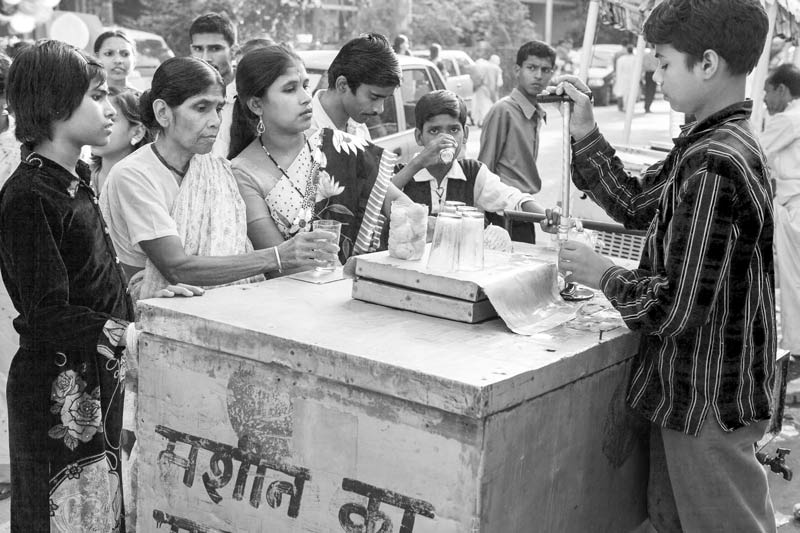
South-East district, National Capital Territory of Delhi
Selling of refrigerated drinking water is a profitable business too especially in the summer season when the public on the road look for cheaper options to quench their thirst. One glass in the National Capital Territory of Delhi can be bought in merely one rupee. However, what these water vendors sell is not refrigerated water in the true sense but ordinary drinking water which could be from any source which is cooled using ice. The quality of the water as well as the ice is not assured and even the container which holds the water and the ice may not be cleaned regularly.
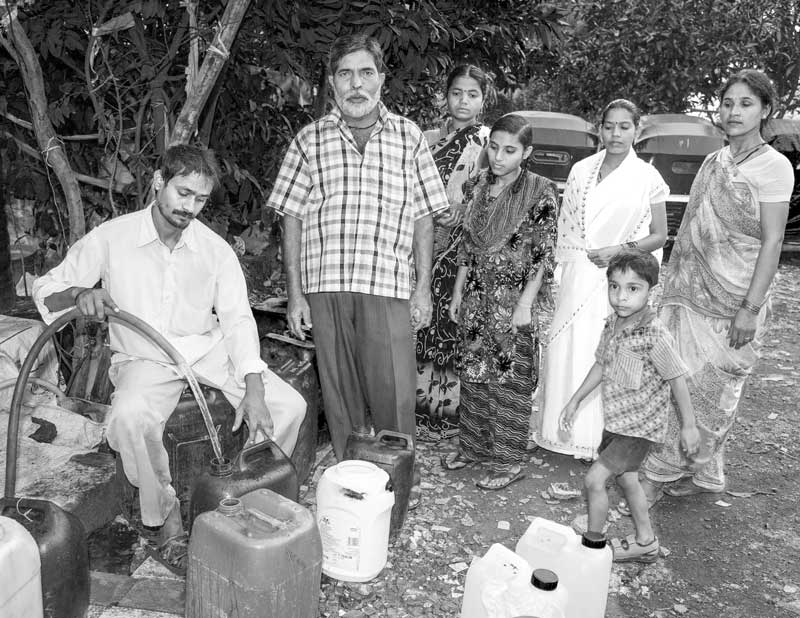
Mumbai, Maharashtra
In many urban settlements which lack individual municipal piped water supply, there exist group water connections. But these group connections may be hijacked by certain local dominant individuals who then sell this water on per liter or per container basis, thereby earning a profit over others' right to water. This water may be practically sold by their agents who also get to earn some money from the transaction. In Mumbai and Delhi, the rate of purchase may vary between 25-50 paise per liter, depending upon the season, water availability and demand.
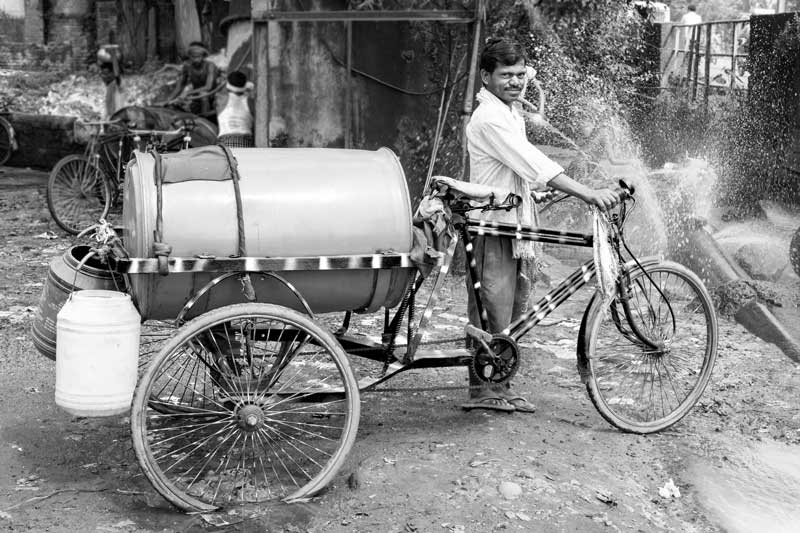
Dhanbad city, Jharkhand
In many cities and towns where the public faces water crisis in the dry season or round the year, individual-based water supply provision offers a good business opportunity. These individuals collect water from varied sources that could include tubewells, wells and water supply pipelines, and deliver the water to residential houses, offices, restaurants and other public places, charging money for the services. In this photo, the source of water is leakage from a pipeline and the water is transported in a specially designed rickshaw-based container.
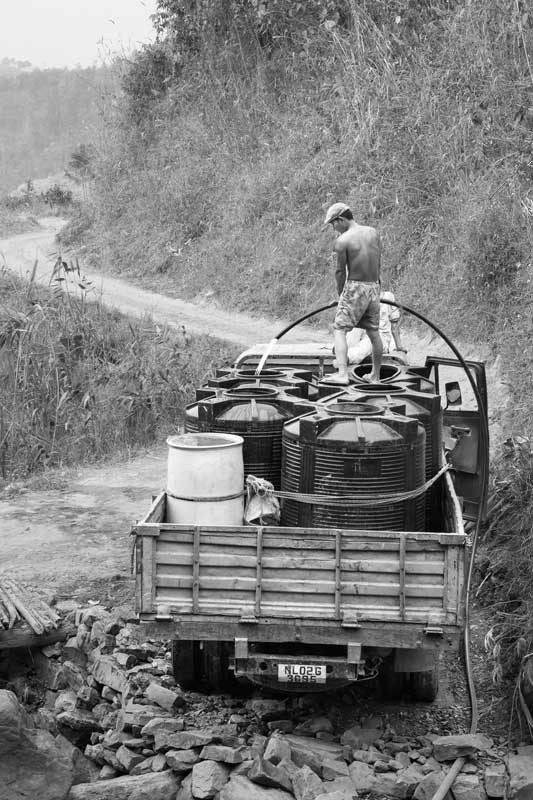
District Kohima, Nagaland
In many towns located in the mountainous and hilly areas, water supply can present a perpetual challenge. This challenge opens a window of opportunity for many who fill water from the mountain streams into tanks and tankers and supply in the town against a charge. In Kohima, the rate generally varies between Rs. 400 and Rs. 500 for a 1000 liters tanker.
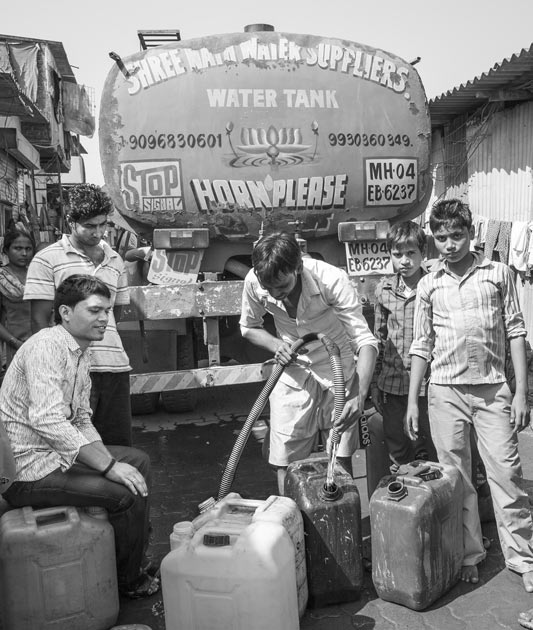
Mumbai, Maharashtra
In urban slums, peri-urban areas and other underserved areas where municipal supply is absent or insufficient, water supply is provided by water tankers which has proliferated as a specialized permanent business serving the water needs of the residents of these colonies throughout the year. The tanker suppliers earn a huge margin of profit but the quality of water they supply is not assured. The prices charged by the private tankers are generally high. In Mumbai, the rate can range between Rs. 1700 and Rs. 2200 for 10,000 liters, while in Delhi the price is higher ranging between Rs 1000 and Rs. 1300 for merely 1000 liters.
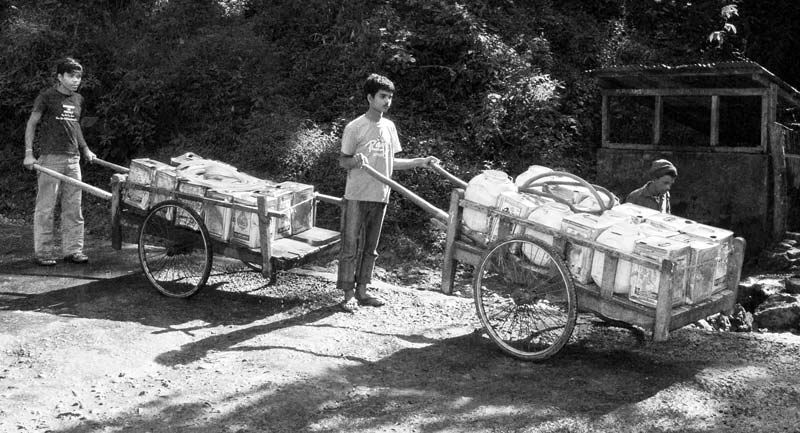
District Kohima, Nagaland
Growing water crisis in urban and rural areas also open the possibility of earning profit from water delivery with small investments. One of the cheaper ways to earn more profit is to deliver water on hand-driven carts, with water filled into smaller containers. However, this alternative may be physically more demanding as well as consume longer time.
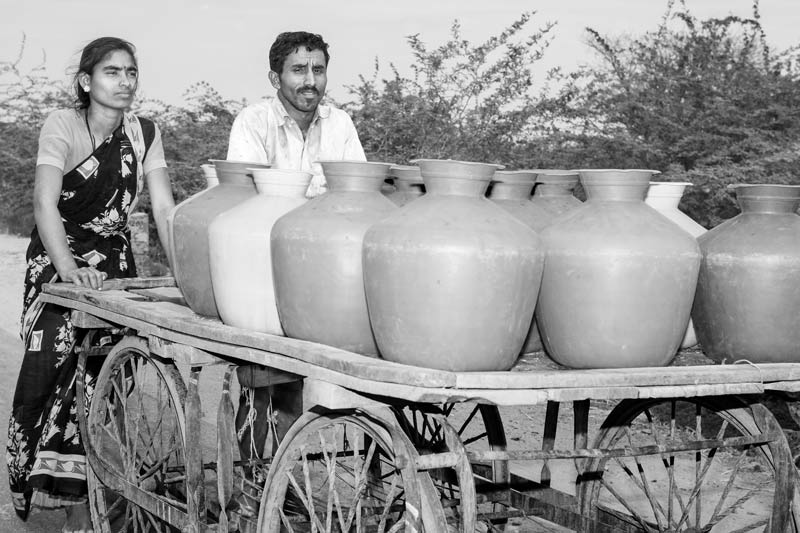
Anantapur district, Andhra Pradesh
Water crisis is not only an urban problem, but is increasingly appearing in the rural areas. Many families have taken up the profession as 'water porters', collecting water from sources located outside the habitation and supplying the needy households in the village, earning a livelihood out of it. In this picture, water has been collected from an irrigation tubewell.
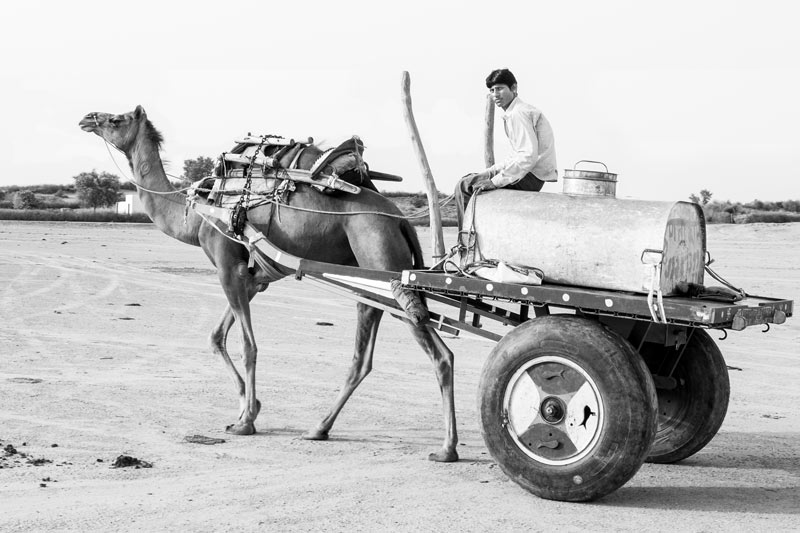
Bikaner district, Rajasthan
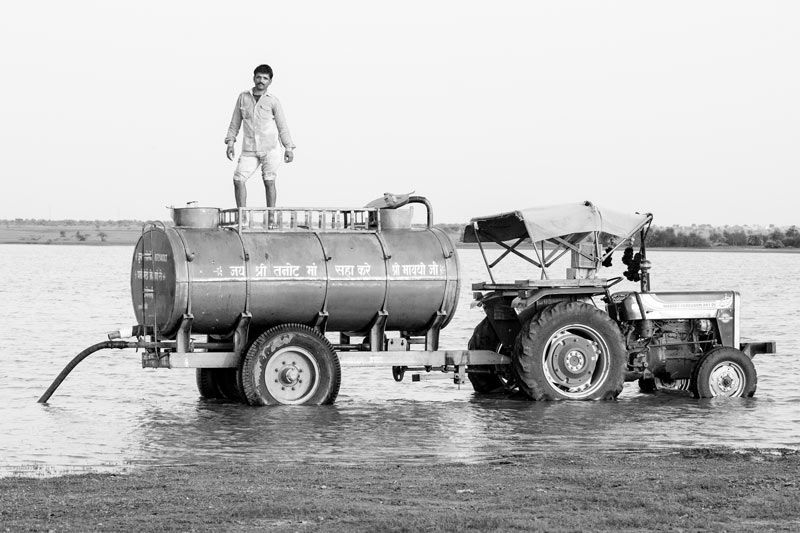
Jaisalmer district, Rajasthan
In rural areas of the desert region, drinking water management has always been a challenge, and as a result, the business of drinking water supply through tankers has been proliferating. The tankers can be animal drawn, such as by camels and bullocks, or be motorized like tractors or trucks. The sources commonly used are wells, tanks, ponds, or the Indira Gandhi Canal water supply pipeline. This service facilitates particularly women who as domestic water managers have to otherwise make several trips a day to the water point which may be quite distant, thereby making the task exhaustive. Further, this service becomes a necessity in the summer season when the nearby water points dry up and even the Indira Gandhi Canal water supply becomes irregular. A small tanker carrying 800-1000 liters water is sold for Rs. 50 when there is plenty of water in the shallow drinking water wells from where it is collected, but the prices rise steeply as the water level declines, going up to as much as Rs. 250 during the water scarce season.
Considered from the perspective of human right to water, the producers and sellers of packaged drinking water as well as the drinking water suppliers at different levels can be said to bring benefits to their customers on the accessibility and acceptability fronts. However, they may fail on the safety, affordability and sometimes even sufficiency parameters. This in turn can thwart other human rights of the customers such as health, education, work and development. In this light, the water producers, sellers and suppliers are obliged to shoulder greater responsibility on their front so that the human rights of their customers are upheld.